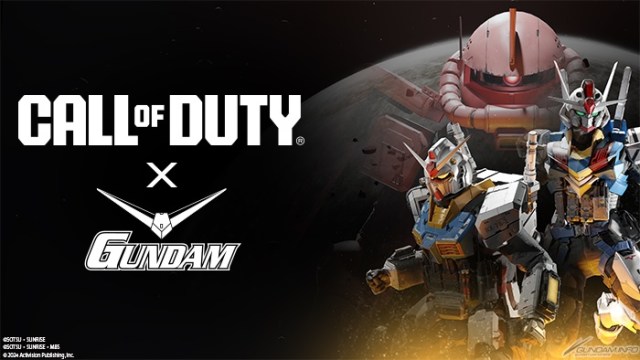
Human-sized Gundams fighting on the streets of Tokyo aren’t as strange as some of the signage behind them.
On Monday, word came that Gundam would be coming to video game publisher Activision’s Call of Duty series, with the iconic anime mecha slated to show up in both Call of Duty: Modern Warfare 3 and Call of Duty: Warzone Mobile.
You might be wondering how giant robots are going to be implemented into Call of Duty’s boots-on-the-ground-centric gameplay, but rather than appearing as towering mobile suits, the RX-78-2 Gundam, fashionable crimson Zaku II Char Custom, and XVX-016 Gundam Aerial will be incorporated as skins, essentially cosmetic overlays for the games’ currently existing infantryman character frames.
Visually, the results are kind of a mixed bag. On the one hand, the level of detail is very nice, with Call of Duty’s artists faithfully replicating all sorts of little design elements from the mecha’s anime appearances.
At the same time, since they’re skins, the Gundam and Zaku bodies still have to move like Call of Duty’s human soldiers, and also retain the same hitboxes so as not to give those using the mecha cosmetics a competitive advantage or disadvantage versus other players. That means they have to have more-or-less human sizes and proportions, and in some of the promotional images the effect is less “Gundam is in Call of Duty!” and more “Call of Duty has Gundam cosplayers in it now,” especially when there are other human combatants on-screen.
But again, that’s sort of unavoidable, given Call of Duty’s focus on player-versus-player gameplay and subsequent need to maintain competitive balance. What is avoidable, though, is something else that’s silly-looking in the game, and which can be seen in this preview shot.
The action seems to be taking place in “Tokyo,” a new map that’s set to be added to Call of Duty: Modern Warfare 3 on May 29 as part of the game’s Season Four update. And sure, even with a quick glance, it does its job of visually conveying “This fight is taking place in a Japanese city,” but there are a couple of things that, once you notice them, stand out as very un-Tokyo-like.
It’s not the garish anime-girl signage that bears a bit of resemblance to the titular heroine of ‘90s anime Excel Saga, though, nor is it what looks like a manga-style oni with blue hair at the top left of the image. Sure, those might be a little on the nose in terms of shouting “This is JAPAN!”, but playing into overseas perceptions of what Japan looks like has become its own branch of design in Japan, especially in areas that are seeing large numbers of foreign tourists during the current inbound travel boom.
No, the strange part is the sign between those two anime-style illustrations, the one that says お品書き.
お品書き is a proper Japanese word, so one might assume it makes sense to see it on a sign in Tokyo. The problem, though, is that お品書き, which is read as oshinagaki, is just the Japanese word for “menu.” It doesn’t mean “special menu,” “extensive menu,” or anything like that. It just means “menu,” nothing less, and nothing more, and so the sign, if you can read Japanese, looks just as ridiculous as a restaurant in the U.S. or any other English-speaking country putting up a giant, illuminated sign that just says “MENU.”
But wait, maybe the sign below お品書き, with the white text on the blue-and-purple background that says 時間営業, is a list of food items that this restaurant serves? Nope. 時間営業 isn’t a list of foods. What’s more, 時間営業 doesn’t mean anything at all. 時間, by itself, means “time,” and 営業 means “business operations,” but combined, they’re gibberish. Odds are someone on the Call of Duty team got mixed up while trying to write 営業時間, which actually does mean something: “business hours,” as in the hours a restaurant is open.
Of course, even if they had gotten it right and written the sign as 営業時間, the sign still wouldn’t have made any sense conceptually, since it’d be like writing “hours of operation” on the side of your business without writing what those hours are.
Update: Following the writing of this article it was pointed out by a reader that there may be a “24” meant to precede 時間営業 but not visible in the above image. In a different preview image of the Tokyo map visible on the Call of Duty official website, the sign does say 24時間営業, with the top of the numerals largely cropped suggesting it’s a scrolling video sign. Due to 時間 meaning both “time” and “hours,” 24時間営業 is a perfectly sensible phrase that means “open 24 hours,” so Activision is linguistically on the ball here, even if the layout, with 24 on its own horizontal line and 営業 and 時間 grouped together on the line below, looks a little unnatural.
Nonsensical Japanese signage is something that comes up with a puzzling level of frequency when overseas creative teams are setting a scene in Japan (something similar happened with the hotel seen in the beginning of the live-action Ghost in the Shell movie).
Sure, it should go without saying that Call of Duty’s primary mission is to entertain, and so looking cool is going to be far more of a priority for the developers than linguistic authenticity. At the same time, it’s not like it’s hard to find reference photos of actual city streets in Tokyo, nor is it hard, in this day and age, to find someone who’s knowledgeable enough about the Japanese language to spot oddities like these that stick out like a sore thumb, and could easily recommend alternatives that look more natural. That goes double for Activision, considering what a huge franchise Call of Duty is, and triple since they’re actively courting anime fans and gamers in Japan with their Gundam collaboration.
▼ If Activision is big enough to license Gundam, it seems like they’re big enough to have someone who’s Japanese-proficient check their work.
All that said, there are still a few days until the Tokyo map is released, so hopefully someone at Activision is scurrying to swap in some more sensible text this very minute.
Source: Bandai Namco
Top image: Bandai Namco
Insert images: Bandai Namco, Call of Duty
● Want to hear about SoraNews24’s latest articles as soon as they’re published? Follow us on Facebook and Twitter!
Follow Casey on Twitter, where he could veer off into discussions of Japanese linguistics and/or ’90s anime at any moment.

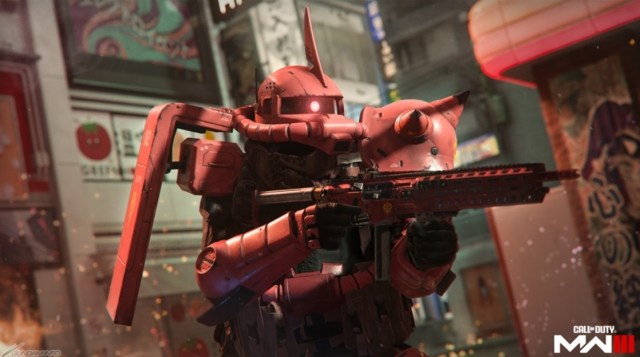
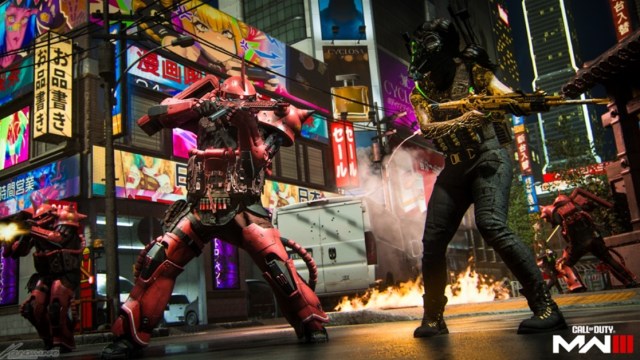
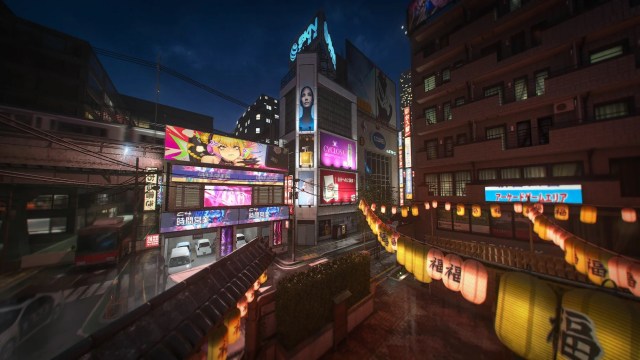
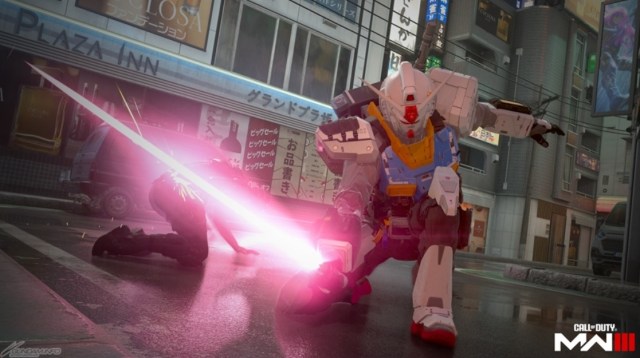
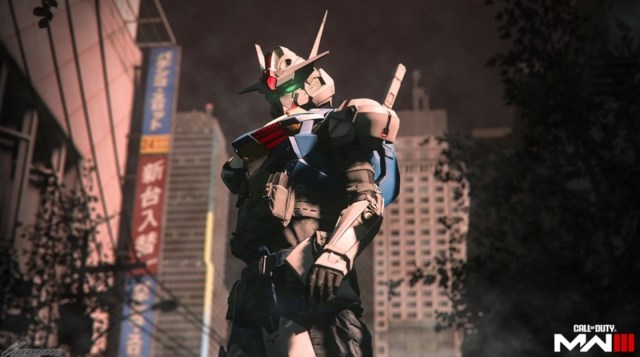
 Japanese beef bowl chain Sukiya’s 2026 Smile Box lucky bag basically pays for itself
Japanese beef bowl chain Sukiya’s 2026 Smile Box lucky bag basically pays for itself Majority of Japanese mayors say foreign residents are essential but most see good and bad effects
Majority of Japanese mayors say foreign residents are essential but most see good and bad effects We revisited Sweets Paradise after a decade to see if Japan’s dessert buffet still delivers
We revisited Sweets Paradise after a decade to see if Japan’s dessert buffet still delivers 7-Eleven Japan starts new temporary luggage storage service in over 300 branches
7-Eleven Japan starts new temporary luggage storage service in over 300 branches Japanese department store rooftop is a secret oasis where you can escape the crowds in Tokyo
Japanese department store rooftop is a secret oasis where you can escape the crowds in Tokyo Japanese beef bowl chain Sukiya’s 2026 Smile Box lucky bag basically pays for itself
Japanese beef bowl chain Sukiya’s 2026 Smile Box lucky bag basically pays for itself Majority of Japanese mayors say foreign residents are essential but most see good and bad effects
Majority of Japanese mayors say foreign residents are essential but most see good and bad effects We revisited Sweets Paradise after a decade to see if Japan’s dessert buffet still delivers
We revisited Sweets Paradise after a decade to see if Japan’s dessert buffet still delivers 7-Eleven Japan starts new temporary luggage storage service in over 300 branches
7-Eleven Japan starts new temporary luggage storage service in over 300 branches Japanese department store rooftop is a secret oasis where you can escape the crowds in Tokyo
Japanese department store rooftop is a secret oasis where you can escape the crowds in Tokyo Starbucks teams up with 166-year-old Kyoto doll maker for Year of the Horse decorations【Photos】
Starbucks teams up with 166-year-old Kyoto doll maker for Year of the Horse decorations【Photos】 Record number of foreign children in Japan need help understanding Japanese in school
Record number of foreign children in Japan need help understanding Japanese in school Demon Slayer’s Mugen Train is now ready to be your personal home sushi train too【Photos】
Demon Slayer’s Mugen Train is now ready to be your personal home sushi train too【Photos】 Exhibit featuring cutting-edge smell technology held at Tokyo Skytree
Exhibit featuring cutting-edge smell technology held at Tokyo Skytree Hamburg and Hamburg Shibuya: A Japanese restaurant you need to put on your Tokyo itinerary
Hamburg and Hamburg Shibuya: A Japanese restaurant you need to put on your Tokyo itinerary Starbucks Japan ready to get Year of the Horse started with adorable drinkware and plushies【Pics】
Starbucks Japan ready to get Year of the Horse started with adorable drinkware and plushies【Pics】 Hayao Miyazaki says Happy New Year to Studio Ghibli fans with new art for Year of the Horse
Hayao Miyazaki says Happy New Year to Studio Ghibli fans with new art for Year of the Horse We found possibly the quietest Japanese-style hotel in Tokyo’s bustling Shinjuku district
We found possibly the quietest Japanese-style hotel in Tokyo’s bustling Shinjuku district Cup Noodle tries an authentic Jiro-style ramen, but something’s not quite right
Cup Noodle tries an authentic Jiro-style ramen, but something’s not quite right The best Starbucks Japan Frappuccinos we want to drink again in 2026
The best Starbucks Japan Frappuccinos we want to drink again in 2026 That time Seiji called JASRAC to ask why he didn’t get paid royalties for his song being on TV
That time Seiji called JASRAC to ask why he didn’t get paid royalties for his song being on TV Japan’s oldest largetooth sawfish in captivity back on display in Mie Prefecture
Japan’s oldest largetooth sawfish in captivity back on display in Mie Prefecture Pizza Hut Japan’s hot lucky bags are perfect for a New Year’s pizza party
Pizza Hut Japan’s hot lucky bags are perfect for a New Year’s pizza party Disillusionment at Tsukiji’s tourist-target prices led us to a great ramen restaurant in Tokyo
Disillusionment at Tsukiji’s tourist-target prices led us to a great ramen restaurant in Tokyo Tokyo considering law requiring more trash cans following litter increase in heavily touristed area
Tokyo considering law requiring more trash cans following litter increase in heavily touristed area Tokyo’s Tsukiji sushi neighborhood asks tour groups to stay away for the rest of the month
Tokyo’s Tsukiji sushi neighborhood asks tour groups to stay away for the rest of the month Tokyo event lets you travel back in time, for free, to celebrate 100 years since Showa era start
Tokyo event lets you travel back in time, for free, to celebrate 100 years since Showa era start Japan may add Japanese language proficiency, lifestyle classes to permanent foreign resident requirements
Japan may add Japanese language proficiency, lifestyle classes to permanent foreign resident requirements Sanrio theme park in Japan announces plans to expand into a Sanrio resort
Sanrio theme park in Japan announces plans to expand into a Sanrio resort Stamina-destroying “Paralysis Noodles” are Tokyo’s newest over-the-top ramen innovation
Stamina-destroying “Paralysis Noodles” are Tokyo’s newest over-the-top ramen innovation Survey asks foreign tourists what bothered them in Japan, more than half gave same answer
Survey asks foreign tourists what bothered them in Japan, more than half gave same answer Japan’s human washing machines will go on sale to general public, demos to be held in Tokyo
Japan’s human washing machines will go on sale to general public, demos to be held in Tokyo Japan’s deadliest food claims more victims, but why do people keep eating it for New Year’s?
Japan’s deadliest food claims more victims, but why do people keep eating it for New Year’s? We deeply regret going into this tunnel on our walk in the mountains of Japan
We deeply regret going into this tunnel on our walk in the mountains of Japan Studio Ghibli releases Kodama forest spirits from Princess Mononoke to light up your home
Studio Ghibli releases Kodama forest spirits from Princess Mononoke to light up your home Major Japanese hotel chain says reservations via overseas booking sites may not be valid
Major Japanese hotel chain says reservations via overseas booking sites may not be valid Put sesame oil in your coffee? Japanese maker says it’s the best way to start your day【Taste test】
Put sesame oil in your coffee? Japanese maker says it’s the best way to start your day【Taste test】 No more using real katana for tourism activities, Japan’s National Police Agency says
No more using real katana for tourism activities, Japan’s National Police Agency says Starbucks Japan reveals new sakura drinkware collection, inspired by evening cherry blossoms
Starbucks Japan reveals new sakura drinkware collection, inspired by evening cherry blossoms Updated cherry blossom forecast shows extra-long sakura season for Japan this year
Updated cherry blossom forecast shows extra-long sakura season for Japan this year Starbucks teams up with 166-year-old Kyoto doll maker for Year of the Horse decorations【Photos】
Starbucks teams up with 166-year-old Kyoto doll maker for Year of the Horse decorations【Photos】 Record number of foreign children in Japan need help understanding Japanese in school
Record number of foreign children in Japan need help understanding Japanese in school Demon Slayer’s Mugen Train is now ready to be your personal home sushi train too【Photos】
Demon Slayer’s Mugen Train is now ready to be your personal home sushi train too【Photos】 Exhibit featuring cutting-edge smell technology held at Tokyo Skytree
Exhibit featuring cutting-edge smell technology held at Tokyo Skytree Hamburg and Hamburg Shibuya: A Japanese restaurant you need to put on your Tokyo itinerary
Hamburg and Hamburg Shibuya: A Japanese restaurant you need to put on your Tokyo itinerary Tokyo fish market breaks New Year auction record as single fish sells for over 5 million yen【Vid】
Tokyo fish market breaks New Year auction record as single fish sells for over 5 million yen【Vid】 Hokkaido wild marijuana removal efforts can’t keep up with rate of growth
Hokkaido wild marijuana removal efforts can’t keep up with rate of growth This is What a Whopper With 1000 Slices of Cheese Looks Like
This is What a Whopper With 1000 Slices of Cheese Looks Like In Hokkaido there’s weed, weed everywhere, but not a drop to smoke
In Hokkaido there’s weed, weed everywhere, but not a drop to smoke Cup Noodle tries an authentic Jiro-style ramen, but something’s not quite right
Cup Noodle tries an authentic Jiro-style ramen, but something’s not quite right We try Akihabara’s new Shaken Ramen in a bubble tea cup 【Taste Test】
We try Akihabara’s new Shaken Ramen in a bubble tea cup 【Taste Test】 Princesses, fruits, and blacksmiths: Study reveals the 30 most unusual family names in Japan
Princesses, fruits, and blacksmiths: Study reveals the 30 most unusual family names in Japan We made hanamaru monaka, a traditional Japanese sweet loved by legendary-swords-turned-hot-guys
We made hanamaru monaka, a traditional Japanese sweet loved by legendary-swords-turned-hot-guys
Leave a Reply